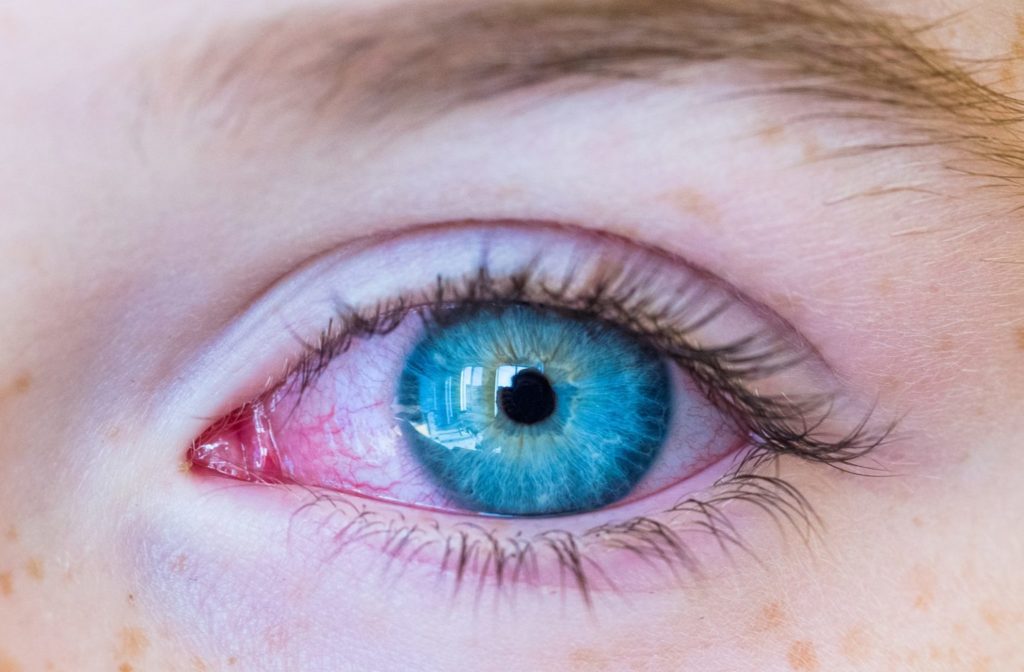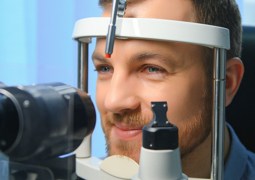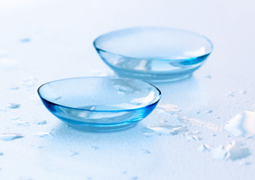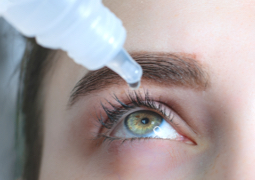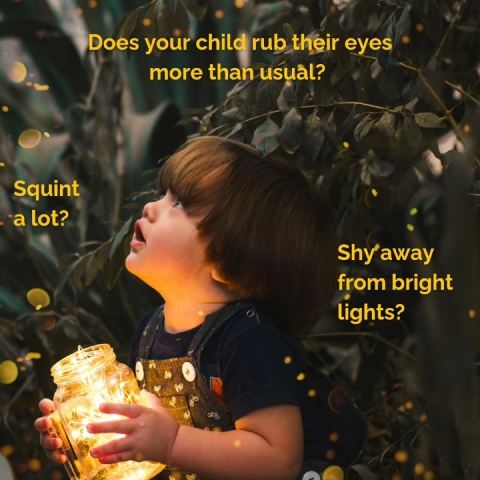It’s common to experience redness when the eyes become irritated or another condition affects them. If you notice your child has red eyes, it may be caused by a variety of different factors. Some common contributors to red eyes in kids can include:
- Viral conjunctivitis (pink eye)
- Bacterial conjunctivitis (pink eye)
- Corneal abrasion or foreign body
- Blepharitis
- Allergic eye disease
Consult your child’s eye doctor if their red eyes persist or they’re experiencing other symptoms such as pain or vision loss. The team at Calgary Family Eye Doctors can help diagnose and treat any underlying eye conditions.
Why Do Eyes Turn Red or Bloodshot?
Red or bloodshot eyes in kids can be just as common a problem as it is for adults. The eyes become red when the blood vessels on the eye’s surface expand due to irritation or infection.
Eyes can become red over time or suddenly, depending on the condition causing them. So what if you notice a red eye in your child with no discharge? Someone may experience red eyes with no other symptoms or alongside eye pain, itching, discharge, swelling, or vision changes. It’s common for a red eye to look worse than it feels.
Many eye conditions can cause red eyes, such as injury, allergy, or dryness. If your child has red eyes, what conditions can cause this to happen?
What Can Cause Red Eyes in a Child?
There can be many underlying causes for eye redness in children. While many conditions are not a significant concern, it’s always important for an eye doctor to assess any problems. You can help protect your child’s vision and eye health.
Some common causes of red eyes in children include:
- Viral conjunctivitis
- Bacterial conjunctivitis
- Corneal abrasion or foreign body
- Blepharitis
- Allergic eye disease
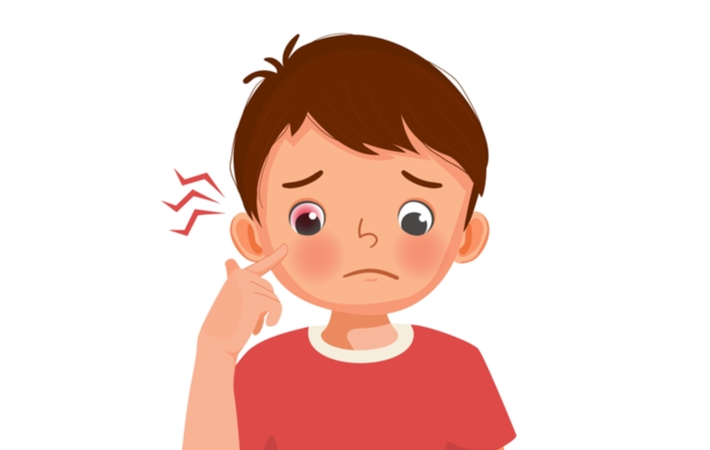
Viral Conjunctivitis
Viral conjunctivitis, or pink eye, is commonly caused by an illness, like having a cold. This form of pink eye is highly contagious and can develop after experiencing an upper respiratory infection. Symptoms typically start in one eye before spreading to the other.
Signs of conjunctivitis include:
- Red eyes
- Eyes that burn or itch
- Swollen eyelids
- Light sensitivity
- Excessive tearing
- Yellow, watery, or stringy discharge from the eyes
There is no direct treatment for viral strains of pink eye but your optometrist can help your child feel more comfortable. Your optometrist may recommend supportive treatments, including non-antibiotic eye drops, resting your eyes, and using a cool compress. The infection should resolve with time.
Bacterial Conjunctivitis
Bacterial strains of pink eye occur due to direct contact with bacteria. Your child may develop this condition from touching their face with dirty hands or using contaminated makeup or facial lotions. The symptoms of bacterial conjunctivitis are similar to the viral strain, however it usually involves much more yellow discharge.
Bacterial pink eye is highly contagious and requires treatment to resolve this condition. Your optometrist can prescribe antibiotic eye drops or ointments.
Corneal Abrasion
A corneal abrasion is a scratch on the cornea, the clear and protective portion of the eye. Many small particles can scratch the cornea, such as dust, dirt, sand, contact lenses, or even a piece of paper.
Signs of a corneal abrasion include:
- Pain
- A gritty feeling in the eye
- Watery eyes
- Eye redness
- Light sensitivity
- Headache
If your child experiences a corneal abrasion, they need emergency treatment to prevent an infection. Before leaving for your eye doctor, flush your child’s eye out with artificial tears or an eyewash bottle if handy, if not available use clean water, and have them blink several times to remove as much debris as possible.
Blepharitis
Blepharitis is inflammation of the eyelids. This condition can occur due to the tiny glands near the base of the eyelids becoming clogged, leading to irritation and inflammation, which can sometimes cause a bump called a stye. While uncomfortable for your child, blepharitis isn’t contagious and doesn’t cause permanent damage to the eyes.
Some symptoms of blepharitis include:
- Watery eyes
- Red eyes
- Itchy eyelids
- Eyes that burn or sting
- Flaking of the skin around the eyes
You can help manage your child’s blepharitis by keeping their eyes clean and removing the crusted oily debris. Book an eye exam if symptoms persist despite following good hygiene.
Allergic Eye Disease
Allergic eye disease is also called allergic conjunctivitis. This condition occurs when allergens enter the eye, causing an allergic reaction. Inflammation occurs, causing red, itchy, watery, and burning eyes.
Your child may experience this allergic reaction for a short or extended period, depending on the allergy trigger. Treatment for this condition involves removing the allergy trigger, easing present symptoms, and minimizing future exposure to allergens.
Common causes of allergic conjunctivitis include:
- Dust
- Pollen
- Mould spores
- Animal dander
- Household detergents or perfume
These are some of the common causes of red eyes in children. While many conditions resolve with time, should you be concerned if your child develops red eyes?
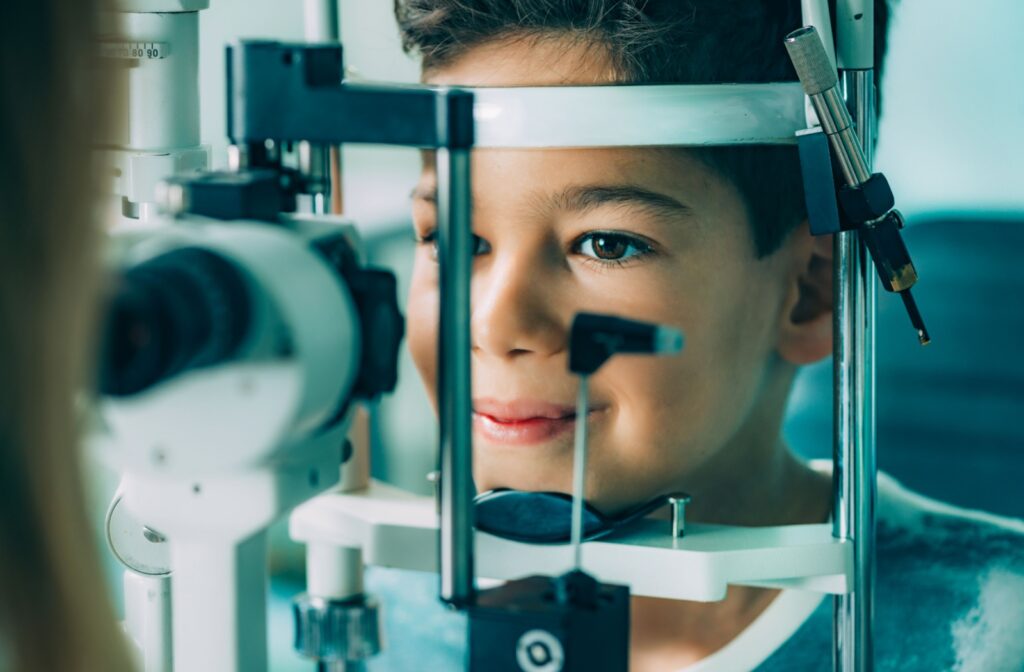
How to Help Soothe Your Child’s Red Eyes at Home
While professional treatment is essential for persistent or severe eye issues, there are steps you can take at home to help soothe your child’s red or irritated eyes—especially when symptoms are mild or you’re waiting for your optometrist appointment.
At-home care tips may include:
- Cool compress: Gently placing a clean, cold washcloth over your child’s closed eyes can help reduce redness and discomfort.
- Artificial tears: Preservative-free lubricating eye drops can provide moisture and relief from dryness or irritation.
- Avoid rubbing: Encourage your child not to rub their eyes, as this can worsen irritation or spread infection.
- Limit screen time: Reducing digital device use gives the eyes a break and helps reduce dryness.
- Wash hands frequently: Keeping hands clean helps prevent the spread of contagious conditions like conjunctivitis.
If symptoms don’t improve or worsen, schedule an eye exam right away. Home remedies can offer comfort, but they are not a substitute for a professional diagnosis and treatment.
How to Prevent Red Eyes in Children
Prevention plays a big role in maintaining your child’s eye health. While not all causes of red eyes are avoidable, certain habits and precautions can significantly reduce your child’s risk.
Tips for preventing red or irritated eyes include:
- Teach proper hygiene: Show your child how to wash their hands thoroughly and avoid touching or rubbing their eyes.
- Avoid sharing personal items: Towels, pillows, eye drops, and cosmetics should not be shared to prevent the spread of infection.
- Manage allergies: If your child has known allergies, work with your doctor to manage symptoms and avoid triggers.
- Protective eyewear: Use goggles or glasses during sports, outdoor activities, or in dusty environments to prevent eye injury and irritation.
- Limit exposure to screens and dry air: Encourage regular breaks during screen time and use a humidifier in dry environments to maintain eye moisture.
By following these preventative tips, you can help protect your child’s eyes and reduce the chances of recurring redness or irritation.
Are Red Eyes Concerning? When to See an Eye Doctor
Because there are many causes of red eyes, it’s difficult to know if they are a concern or not. Eye redness is often less concerning than eye pain or difficulty seeing.
Redness typically goes away on its own, but sometimes it can mean a more significant problem. You should take your child to the optometrist if they experience:
- Painful eyes
- Worsened vision
- Light sensitivity
- Symptoms continuing longer than a FEW DAYS
- Worsening symptoms
- Pus or mucus coming from the eye
- Fever or aches
Ensure you take your child for an assessment if they experience red eyes alongside other concerning symptoms. Having your child’s eyes examined is beneficial, even if you think there are no significant problems. Your eye doctor can determine the cause of your child’s irritation and recommend an effective treatment plan. Contact your optometrist for an eye exam if your child is experiencing red eyes.


